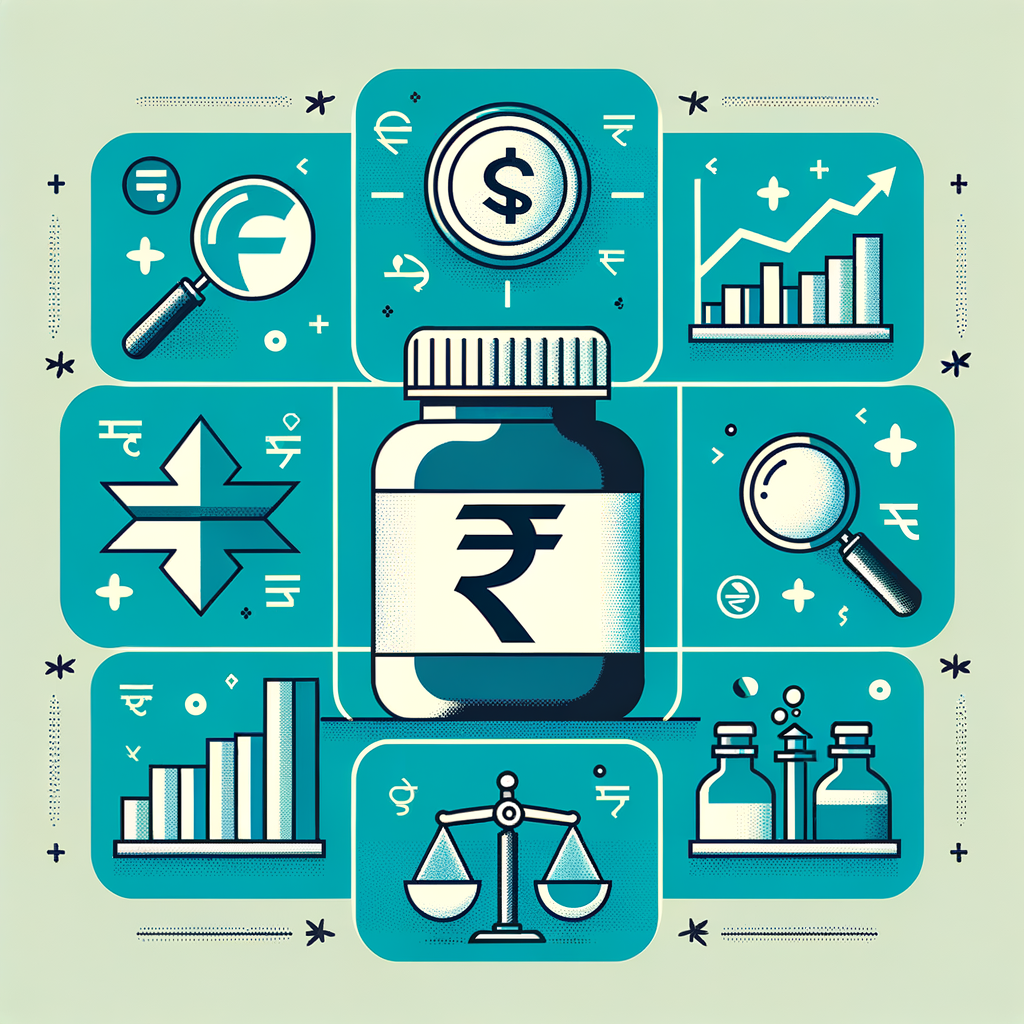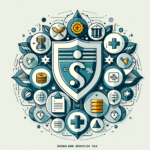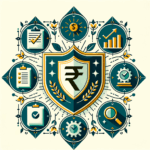GST on Medicines and Healthcare Products – Revised List 2025
Healthcare affordability is a cornerstone of every Indian household’s financial planning and a critical operational aspect for businesses in the pharmaceutical sector. A significant factor influencing the final cost of medical supplies is the Goods and Services Tax (GST). Understanding the GST on medicines and healthcare products is no longer just for accountants; it’s essential for consumers managing medical bills and small business owners navigating compliance. This article serves as your comprehensive guide for 2025, breaking down the revised GST rates, detailing important exemptions, and explaining what these tax structures mean for your budget and your business.
Understanding the Basics of GST on Healthcare in India
Before diving into the specific rates, it’s helpful to grasp how GST functions within the healthcare landscape. This foundational knowledge helps demystify the numbers you see on your pharmacy bills and supplier invoices, making you a more informed consumer and business owner. The right understanding ensures you are aware of the GST rates healthcare products India has implemented and how they affect your bottom line.
What is GST and How Does It Apply to Medicines?
Goods and Services Tax (GST) is an indirect tax that has replaced many other indirect taxes in India, such as excise duty, VAT, and service tax. It’s a single, nationwide tax levied on the supply of goods and services. GST is split into three main components:
- CGST (Central GST): Collected by the Central Government on an intra-state sale (e.g., a transaction happening within Maharashtra).
- SGST (State GST): Collected by the State Government on an intra-state sale (e.g., a transaction happening within Maharashtra).
- IGST (Integrated GST): Collected by the Central Government for an inter-state sale (e.g., a transaction between Maharashtra and Delhi).
For example, when you purchase a strip of medicine from a local pharmacy in your city, the tax on your bill is split into CGST and SGST. If that pharmacy sourced the medicine from a distributor in another state, the distributor would have paid IGST. Different medicines, medical devices, and healthcare products are categorized into different GST slabs—NIL (0%), 5%, 12%, and 18%—which directly determines their final retail price.
Why Keeping Track of GST Rates is Crucial
Staying updated with the latest GST rates isn’t just a matter of curiosity; it has tangible financial implications. The GST impact on medicines and healthcare products is felt directly by both ends of the supply chain. For consumers, a shift in a GST slab can mean a noticeable increase or decrease in the final price of essential medicines, affecting monthly household budgets. For small businesses, like local pharmacies or medical equipment suppliers, knowing the correct rates is fundamental for compliance. It ensures accurate invoicing, proper management of Input Tax Credit (ITC)—where you get a credit for the tax you’ve paid on your purchases—and seamless How to File GST Returns Online: A Step-by-Step Guide of the GST Filing Process & Procedure. Accurate financial planning, avoiding penalties, and maintaining healthy cash flow all depend on staying informed about these rates. Understanding The Impact of GST on Small and Medium Enterprises is crucial for long-term stability.
GST Rate Slabs for Medicines and Healthcare Products (2025)
The GST Council has carefully structured the tax rates for medical goods, placing essential and life-saving items in lower tax brackets to ensure they remain affordable. Here’s a detailed breakdown of the key categories for 2025.
Pro-Tip: For absolute certainty on a specific product, it’s always best to cross-verify its HSN (Harmonized System of Nomenclature) code on the official portal. You can use the HSN search tool on the official CBIC (Central Board of Indirect Taxes and Customs) website to look up current rates.
NIL Rated / GST Exempted Items
An item that is “NIL rated” or “exempt” means that no GST is charged on its final sale to the consumer. This category is reserved for the most essential services and products critical to public health. Understanding the GST exemption medicines and healthcare products India provides is key to recognizing where costs are minimized by design.
- Human blood and all its components.
- All types of contraceptives.
- Services provided by healthcare professionals, including doctors, paramedics, and clinical establishments.
- Hospital room rent, provided the charge is up to ₹5,000 per day. (Note: ICU and other specific room types may have different rules).
- Ambulance services.
5% GST Rate: Essential Medicines and Devices
This is arguably the most important slab for consumers, as it covers a vast range of life-saving and essential drugs. The low rate is intended to keep critical healthcare accessible and affordable for the masses.
- Most life-saving drugs specified by the government, including medications for cancer, diabetes, HIV-AIDS, malaria, and tuberculosis.
- All forms of vaccines, including those for COVID-19.
- Insulin injections.
- Medical grade oxygen.
- Coronary stents and artificial limbs.
- Assistive devices like hearing aids.
- Oral rehydration salts.
12% GST Rate: Common Formulations and Products
This slab generally includes many common over-the-counter (OTC) medicines, alternative medicines, and specific healthcare products that are not considered life-saving but are still essential for general well-being.
- Ayurvedic, Unani, Siddha, or Homeopathic medicines.
- Glands and other organo-therapeutic products.
- Toothpowder.
- Blood glucose monitoring systems and their test strips.
- Photographic plates and films for X-rays.
- Maternity belts and other specific medical accessories.
18% GST Rate: Wellness and Other Healthcare Goods
This is the standard GST rate and applies to healthcare products that are not covered under the lower slabs. This category often includes wellness products, high-end medical equipment, and other general goods.
- Nicotine polacrilex gum, which is used for nicotine replacement therapy.
- Hand sanitizers (classification confirmed during the pandemic).
- Most medical equipment and machinery used in hospitals.
- Ammonia, potassium permanganate, and other chemical formulations.
- Medicated shampoos and soaps.
The Medicines Healthcare Products GST Revised List 2025 India: Key Updates
The GST framework is dynamic, with the GST Council meeting periodically to review rates and classifications based on public need, industry feedback, and economic factors. For 2025, it’s crucial to be aware of the latest GST updates for medicines India.
Disclaimer: The information below is based on recent announcements and clarifications from the GST Council. For legal and official compliance, always refer to the latest circulars and notifications published on the official GST portal.
While there have been no sweeping changes to the core slabs, the Council has provided key clarifications effective from late 2024 and into 2025. One of the significant updates involves the re-classification of certain diagnostic kits. Some advanced kits previously falling under the 18% slab have been reviewed, and based on their utility in detecting critical diseases, they have been moved to the 12% slab to encourage preventive healthcare.
Furthermore, there has been a clarification on the GST treatment for combination packs, such as a glucometer sold with a pack of test strips. The Council has clarified that the GST rate applicable will be that of the principal supply, which in this case is the glucometer. Business owners must take note of these nuances to ensure correct invoicing. For the most current information, it is highly recommended to monitor the Press Releases section of the official GST Council website.
Impact on Small Businesses and Individual Consumers
The structure of GST medicines healthcare products has a direct and practical impact on the daily operations of small businesses and the household budgets of individuals.
For Pharmacy Owners & Medical Distributors (Small Businesses)
- Input Tax Credit (ITC): This is the most significant benefit for businesses. When a pharmacy owner purchases medicines from a distributor, they pay GST. They can claim this amount as ITC, which reduces their final GST liability when they sell the medicines to a consumer. For example, if they paid ₹100 in GST on purchases and collected ₹150 in GST from sales, they only need to pay the government ₹50 (₹150 – ₹100). Efficient ITC management is key to profitability.
- Compliance: Using the correct HSN code for every product on invoices is non-negotiable. Mismatched codes can lead to penalties and issues during GST return filing. Staying updated with the revised lists ensures that your accounting and invoicing systems are accurate.
- Simplified Tax Management: Navigating ITC claims, HSN codes, and timely filing can be complex. Services like TaxRobo’s GST filing and accounting solutions can automate these processes, simplifying compliance and helping you maximize your eligible ITC claims without the headache.
For Salaried Individuals & Families (Consumers)
- Medical Bills: The tiered GST system is designed to benefit you directly. The fact that essential drugs for chronic conditions like diabetes and heart disease are in the 5% slab helps keep long-term healthcare expenses manageable.
- Budgeting: When you receive a pharmacy bill, take a moment to look at the GST component. It helps you understand how much of the cost is tax. This transparency allows for better financial planning, especially for families with recurring medical needs.
- Overall Impact: The final GST impact on medicines and healthcare products for a consumer is a more predictable and often lower cost for essential medical care. The government’s policy of keeping life-saving items under a lower tax bracket directly contributes to reducing the financial burden of healthcare on the common person.
Conclusion
The GST framework for medical supplies in India is designed to balance revenue generation with public welfare. By categorizing items into four main slabs—Exempt, 5%, 12%, and 18%—the system ensures that the most critical life-saving drugs remain affordable. For both small business owners and individual consumers, staying informed about the GST on medicines and healthcare products is not just about compliance; it’s about smart financial management. Keeping track of the latest updates allows businesses to maintain profitability and consumers to manage their healthcare budgets effectively.
Navigating the complexities of GST, from HSN codes to ITC claims, can be a challenge. If you need expert assistance to ensure your business is fully compliant and financially optimized, don’t hesitate. Contact the specialists at TaxRobo today for seamless GST registration, filing, and accounting services.
Frequently Asked Questions (FAQs)
1. Are all life-saving drugs exempt from GST in India?
No, not all are exempt. While some critical items like human blood are fully exempt from GST, most life-saving drugs for conditions like cancer, diabetes, and HIV are placed in the lowest taxable slab, which is 5%. This low rate is intended to make them highly affordable while still keeping them within the tax framework, which allows manufacturers and suppliers to claim Input Tax Credit.
2. How can I find the exact GST rate for a specific medicine or medical device?
The most reliable method is to check the HSN (Harmonized System of Nomenclature) code associated with that product. This unique code determines the tax slab. You can use the HSN search tool available on the official GST portal or the CBIC website to find the applicable GST rates healthcare products India. The HSN code is usually mentioned on the product’s packaging or the invoice from the supplier.
3. Have there been any major changes in the latest GST updates for medicines India in 2025?
For 2025, the GST Council has focused more on clarifications and minor re-classifications rather than major slab overhauls. Key updates include clarifications on the GST rates for certain diagnostic kits and combination packs. It is always recommended to refer to the latest official notifications from the CBIC or the GST Council’s press releases for the most accurate and legally binding information.
4. As a pharmacy owner, can I claim Input Tax Credit on expired medicines that are returned?
Yes, you can manage the ITC on expired medicines that are returned to the supplier. The correct procedure involves issuing a credit note to your supplier for the value of the returned goods. This transaction effectively reverses the Input Tax Credit you had originally claimed on that purchase. Proper documentation and accurate GST return filing are crucial for this process, which is where professional services from platforms like TaxRobo can be invaluable in ensuring compliance.



